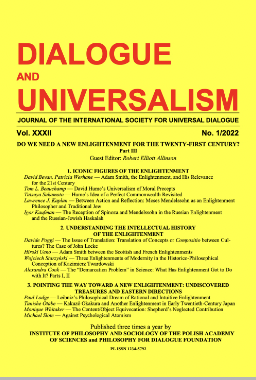PEIRCE’S SEMIOTICS AND THE BACKGROUND OF WHITEHEAD’S SYMBOLISM
PEIRCE’S SEMIOTICS AND THE BACKGROUND OF WHITEHEAD’S SYMBOLISM
Author(s): Bogdan RusuSubject(s): Philosophy, History of Philosophy, Social Philosophy
Published by: Instytut Filozofii i Socjologii Polskiej Akademii Nauk i Fundacja Filozofia na Rzecz Dialogu
Keywords: Alfred N. Whitehead; Charles S. Peirce; George Santayana; algebraic reasoning; symbolism; symbolic reference; perception; critical realism; pansemiotism
Summary/Abstract: The aim of this paper is to present Peirce’s semiotics as an important factor in the genesis of Alfred North Whitehead’s doctrine of symbolism. I argue that Peirce had a direct impact on Whitehead’s earliest reflections on symbolism generally and mathematical symbolism particularly. From his first encounter with Charles Sanders Peirce’s semiotic doctrine, contrasted to that of George F. Stout, Whitehead derived a general doctrine of signs which he never abandoned and which formed the basis of his mature doctrine of symbolism. While in the first years of his Harvard professorship, Whitehead suffered a second, indirect, influence from Peirce, through the American philosophers he interacted with. His mature philosophy of perception is both the development and application of the doctrine derived from Peirce and Stout thirty years before, and a reply to the realist doctrines which stressed the symbolic nature of perceptual knowledge, most importantly Santayana’s. Whitehead’s own brand of realism rests on the assumption of a pansemiotic principle, obscurely and mediately derived from Peirce.
Journal: Dialogue and Universalism
- Issue Year: 2024
- Issue No: 2
- Page Range: 7-37
- Page Count: 31
- Language: English
- Content File-PDF

